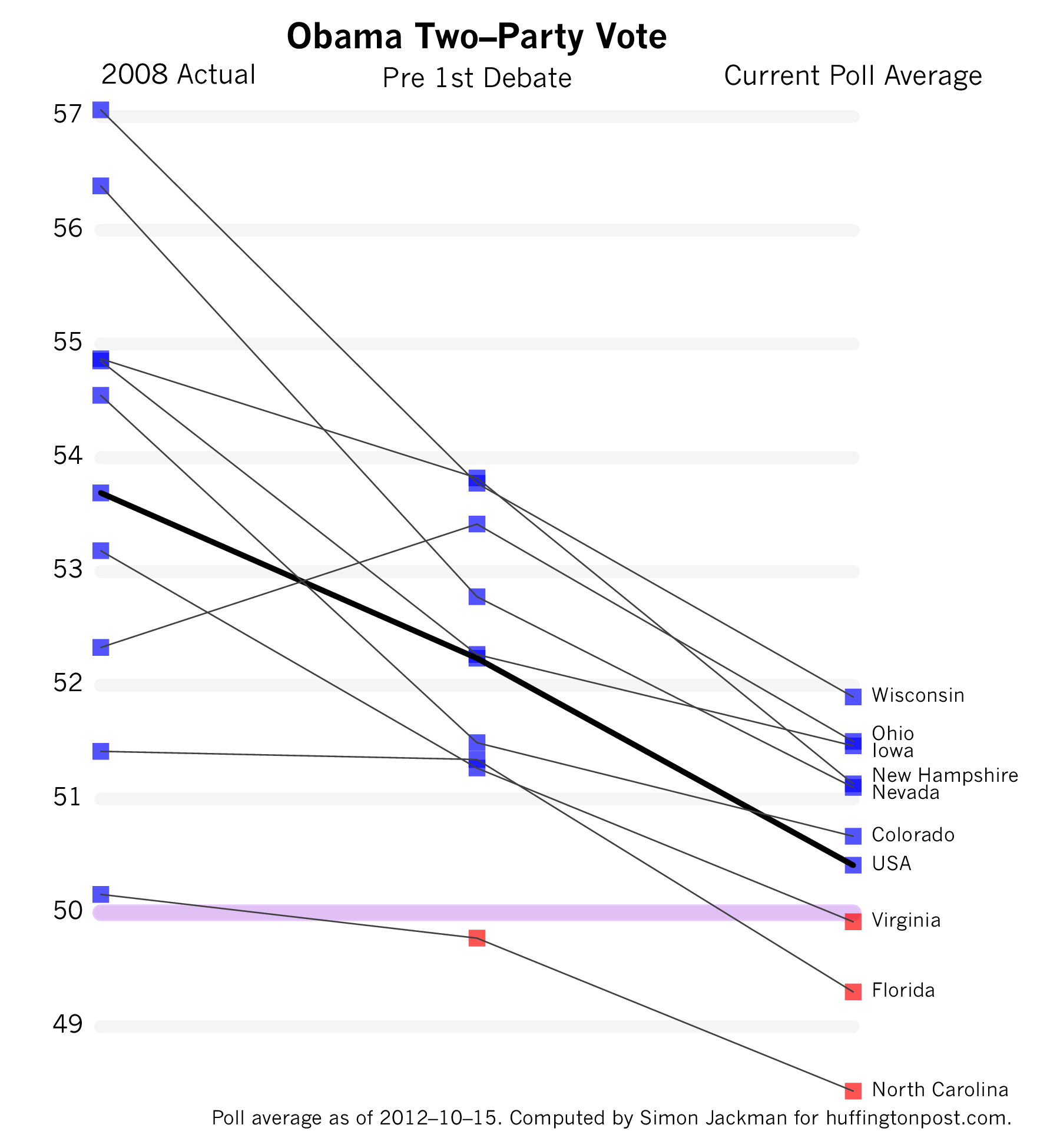
On the eve of the second presidential debate, it is helpful to take stock of what current polling is indicating about the campaign.
Romney's debate bounce -- or rather, Obama's debate slump -- appears to be over. National-level polling appears to have bottomed out for Obama. Further, once we integrate the information about the national trend contained in the state-level polls, it appears that Obama's post-debate slump was not as large as it might have seemed at the time (and I'm talking to you, Andrew Sullivan).
Indeed, with the benefit of only a little hindsight (and only a little modeling) it appears that only about 1.5 percentage points separates Obama's late September, national peak from his early October trough, with a recovery of a few tenths of a percentage points over the last seven to 10 days.
Moreover, even in the immediate aftermath of the first debate, Obama never trailed Romney, once the information in the state-level polls is integrated with the national-level polls.
All the same, the national race is unquestionably tighter now than it was. Obama's lead in the national track produced by my model is about half a percentage point. In late September this was four percentage points.
The swing state picture has generally remained better for Obama. In the picture below I look at the the national-level estimate of Obama's two-party share, along with results from nine battleground states, all won by Obama in 2008. A useful reference point is Obama's two-party share in 2008, appearing on the left of the graph. In the middle of the graph I plot the estimates from my model using polls fielded prior to the first debate.

The general fall in Obama support between 2008 and where the campaign stood on the eve of the first debate is clear (the pattern of lines sloping down, left to right). Only in Ohio was Obama generally outperforming his 2008 result.
Since the debate, Obama's national vote share has slipped by roughly the same amount it had fallen between the 2008 election and where it stood on the eve of the debate: from 53.7 percent to 52.2 percent (pre-debate) to 50.4 percent (now). Post-debate slumps of a similar magnitude appear across the nine battleground states on the graph. North Carolina now lies on 48.5 percent (Obama's share of two-party vote intentions). Florida had been resisting the national trend away from Obama prior to the debate, but has also fallen below 50 percent. Virginia is at 49.9 percent. At this stage, only Indiana, North Carolina and Florida look like they will be picked up Romney, which is won't win Romney the election.
Obama won Ohio with 52.3 percent of the two-party vote in 2008. Pre-debate, I estimated Obama two-party support there at 53.4 percent. Today that figure is 51.5 percent, with the falls relative to both the 2008 result and the pre-debate estimate the lowest among the swing states. Relative to 2008, Obama is off 0.8 percentage points in Ohio; the corresponding numbers are 1.7 in North Carolina, 2.1 in Florida, 2.9 in Iowa, 3.3 in Virginia (the same as the national-level swing), 3.9 in Colorado, 5.1 in Wisconsin, and 5.3 in Nevada.
So long as Obama's Ohio numbers hold up, so, too, will his chances of winning the Electoral College, and thus far, they have. Which will be music to the ears of owners of Ohio's television stations...